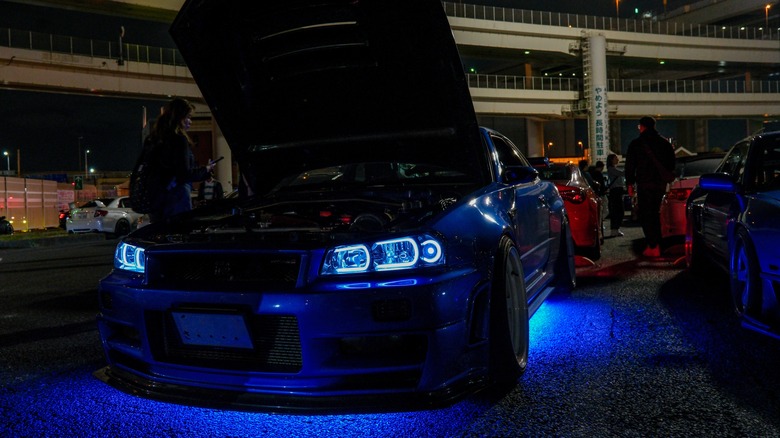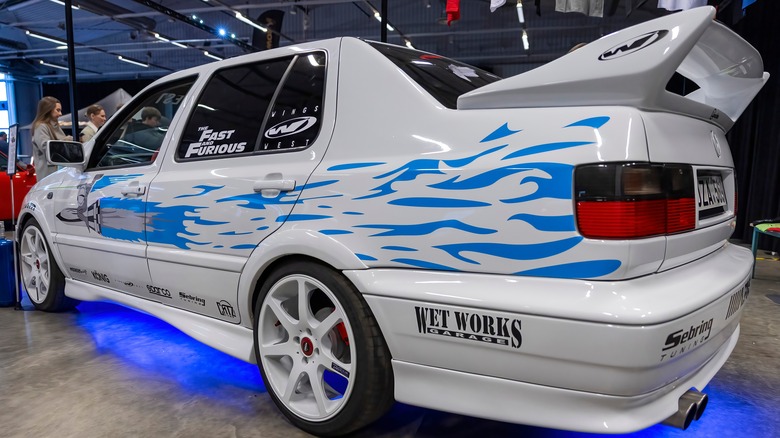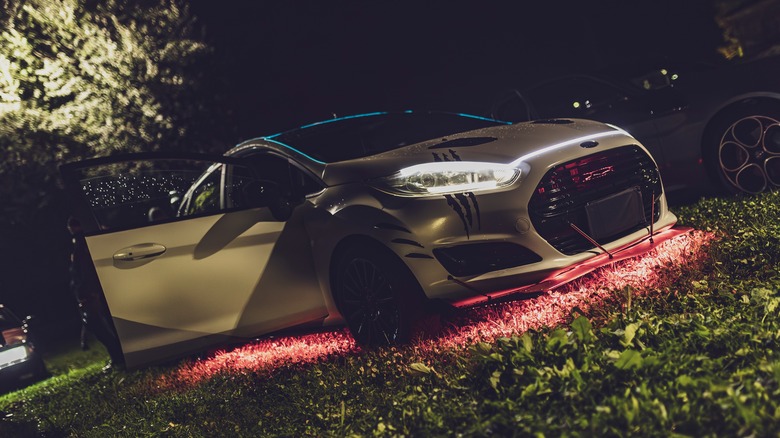Is It Illegal To Drive With Underglow Lights On Your Car?
Underglow has been seeing a resurgence in popularity in recent years, with modern LED technology allowing for mesmerizing patterns on all sorts of modified cars. Everything from rock lights on pickup trucks to neon underbody kits on many 90s JDM cars reminiscent of the "Fast and Furious" aesthetic are becoming more commonplace on today's roads. But are they actually legal to run? Are there any specific rules at either a state or federal level governing their use? Let's explore so you can be informed and know when it's safe to turn on your setup.
Generally speaking, common sense rules apply to most aspects of underglow. For instance, it's universal across the U.S. that you will likely get pulled over and fined if you're running flashing lights that mimic emergency lighting, such as red and blue or, in some regions, flashing blue lights that are commonly seen on emergency medical service vehicles.
Similarly, vehicles putting on light shows are more likely to get noticed than ones with more subtle, unobtrusive lighting. All that said, we'll go over the general legality on a per-state basis, running through which states cite underglow as expressly illegal, which have certain conditions in which they are legal, and which allow underglow on public roads. However, before taking to the road, always check with your specific state's regulations, since they may be updated or have certain complications, such as what colors aren't allowed, where you can place the lights, and so on. Lastly, this only refers to regions in the U.S., not Canada, Europe, Asia, or elsewhere.
The legality of underglow, state-by-state
Out of all 50 states, eight expressly forbid underglow either by name or by association, namely Connecticut, Illinois, Maine, Massachusetts, Michigan, Minnesota, Pennsylvania, and Washington State. These laws generally apply to vehicles traveling on public roads. That is to say, you can equip a car with underglow so long as it's a show car and not actually driven around except on private property.
Some states, like Illinois, specifically disallow underglow in the first place, because the law states that motor vehicles should only use headlights, taillights, and parking lights with colors that satisfy the United States Department of Transportation regulations. Because neon underglow isn't on that list of regulations, it's not permitted to have a car with them.
Some states have more vague instructions, such as Delaware and New Jersey. Their laws specify that cars may have underglow, but the underglow must be white or amber in the front and red in the rear, as red underglow in the front may cause confusion as to whether it's actually a taillight, and is also commonly used in emergency vehicles, so most states disallow red in general.
In addition, many outlaw certain combinations such as red and blue, in addition to flashing lights. Some regions take it a step further, such as Georgia, which outlaws violet and green underglow as well. Lastly, places like Montana outlaw rotating and oscillating lighting in addition to flashing effects, so neon with wave-like visuals may be affected by those specific laws. So if you want easy, iconic upgrades for older cars, underglow is generally fine but there are other, less risky options available.
Can you still drive in the states that ban underglow?
Generally speaking, states outlawing underglow do so because the lights may be construed for something else, such as emergency lights or false brake lights. As such, underglow's flashing functionality and certain emergency colors shouldn't be used when driving on public roads, though they're usually perfectly fine for use in car shows.
There's some room for interpretation regarding these laws state-by-state. For instance, some states outright ban underglow altogether. Whereas others, like California, allow them by name up to 0.05 candela per square inch, and not installed within 12 inches of required lights like headlights and taillights. Some states may outlaw certain types of lighting if it mimics emergency vehicles or traffic signals, like having a car in Colorado displaying green lights which may confuse people.
In short, if in doubt about a specific region's laws, it's best to stick to certain caveats. Firstly, be absolutely certain that it's not one of the aforementioned states where it's explicitly illegal to equip a car with underglow on public roads. Beyond that, make sure not to display commonly used emergency colors like red and blue, or use flashing or oscillating patterns. Smaller LEDs such as rock lights are usually white or amber and thus typically don't fall under this category. However, for larger neon setups, it's best to stick with solid unused colors like pink, yellow, and teal instead. In other words, treat it like chameleon windshield tint: Legal, up to a point.


